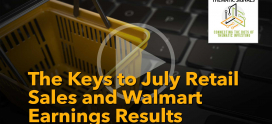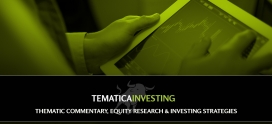Rising consumer credit card debt to be a headwind to GDP in 2018
We are starting to get not only holiday sales results from the likes of Kohl’s (KSS) and others, but also December same-store-sales results from Tematica Investing Select List resident Costco Wholesale (COST) and its retail brethren. Thus far the results are positive and in some cases much better than expected, but when we see we think about the other shoe to drop. In this case, that is “How are consumers paying for all of this given that wages barely budged in 2017?”
The answer is they have been turning to their credit cards. Before the holidays began, the Federal Reserve found consumer credit card debt hit $808 billion exiting September. Now let’s add findings from MagnifyMoney that “people who used credit cards for holiday purchases charged an average of $1,054, about 5% more than last year.” This helps support the view that consumer credit card debt will eclipse $1 trillion this year.
For us here at Tematica, it’s more reason to think consumers, especially Cash-Strapped Consumers, are likely to use the benefits of tax reform to get their financial houses in order, pay down debt and spend less than the Wall Street herd is thinking. In other words, we see this supporting views that were laid out by Chris Versace and Lenore Hawkins on last week’s Cocktail Investing podcast, and that’s before we factor in potential Fed rate hikes this year.
“The scary number — $1 trillion — we’ll definitely hit in 2018,” said Jill Gonzalez, an analyst with WalletHub. “It seems to say a lot of American consumers did not learn their lesson from the recession and are returning to living beyond their means.”
Credit card debt stood at $808 billion on Sept. 30, the end of the third quarter, according to the most recent data from the Federal Reserve Bank of New York. That’s $280 billion more than the previous high hit in 2008, at the height of the financial crisis that led to the Great Recession.
As consumers keep spending away on their credit cards — which typically come with interest rates starting at about 16 percent — the Federal Reserve is expected to have two or three quarter-point hikes this year to a key rate that affects consumer debt. It did so three times in 2017.”Every time there is a Federal Reserve rate hike, that adds about $1.5 billion to our collective financing rates,” Gonzalez said. “That has to do with these delinquency rates rising. And when you factor in mortgages, student loans and auto loans, that becomes a scary picture.”



